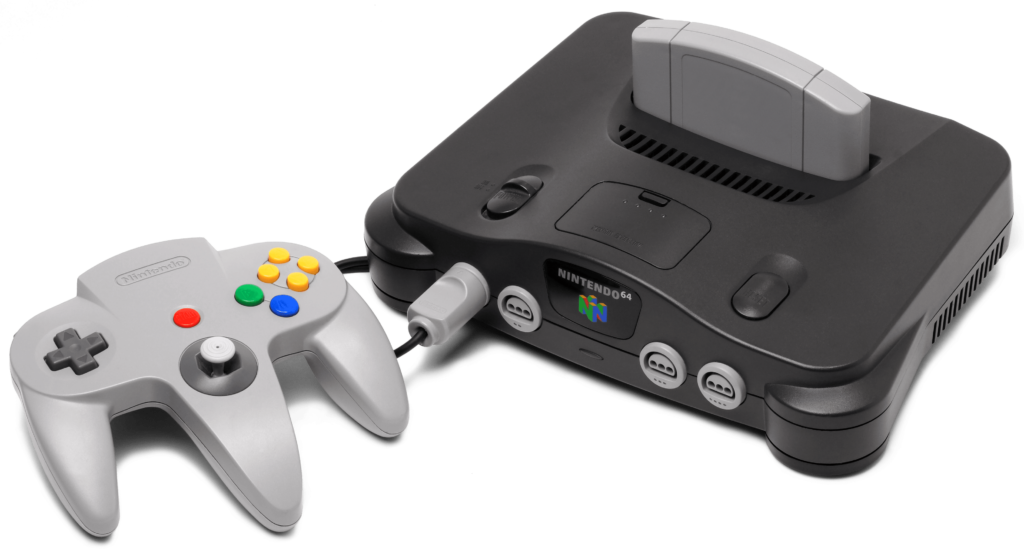

The Nintendo 64, also known as the N64, was Nintendo’s third home console, launched to succeed the Super Nintendo Entertainment System (SNES). Developed in the early 1990s, the console’s project began under the codename “Project Reality,” resulting from a partnership between Nintendo and Silicon Graphics (SGI). SGI provided advanced 3D graphics technology, allowing the Nintendo 64 to stand out among its competitors at the time.
Nintendo’s decision to use cartridges instead of CDs became a defining factor in the N64’s history. While cartridges offered faster loading times, their limited storage capacity drove third-party developers like Square away, which shifted the Final Fantasy series to Sony and the PlayStation. This loss of partnerships significantly reduced the console’s game library.
Technical Information
- Central processor: NEC VR4300 64-bit, running at 93.75 MHz.
- Graphics processor: SGI RCP (Reality Coprocessor).
- RAM: 4MB (expandable to 8MB with the Expansion Pak).
- Video resolution: 320×240 to 640×480 pixels.
- Audio: 16-bit stereo sound.
- Main media: proprietary ROM cartridges.
General Information
- Console names: Nintendo 64 and N64.
- Release dates: June 23, 1996, in Japan; September 1996 in the USA.
- Original price: US$199.99.
- Country of origin: Japan.
- Manufacturer: Nintendo.
- Main media: proprietary ROM cartridges.
- Units sold: approximately 32.93 million worldwide.
- Predecessor: Super Nintendo Entertainment System (SNES).
- Successor: Nintendo GameCube.
- Backward compatibility: Mone.
Special Accessories and Controllers
The Nintendo 64 was a pioneer in introducing the first analog controller in a home console, revolutionizing gameplay in 3D environments. The controller also featured an expansion slot for peripherals, such as:
- Rumble Pak: Introduced vibration feedback, enhancing game immersion.
- Expansion Pak: Expanded RAM to 8 MB, essential for games like The Legend of Zelda: Majora’s Mask and Perfect Dark.
- Controller Pak: Memory card used to save progress in games without built-in storage.
- Transfer Pak: Enabled connectivity between the N64 and Game Boy, used in titles like Pokémon Stadium.
Impact and Legacy
The Nintendo 64 played a pivotal role in the transition from 2D to 3D gaming. Titles like Super Mario 64 and The Legend of Zelda: Ocarina of Time set new standards for three-dimensional games, influencing future generations of developers. The partnership with Rare was crucial, adding renowned titles like GoldenEye 007 and Banjo-Kazooie to the console’s catalog.
Curiosities
- The collaboration with Silicon Graphics was essential for the console’s architecture.
- A famous demonstration video of Final Fantasy circulated as a supposed test for the Nintendo 64. Many believe it was the initial prototype of Final Fantasy VII, which was eventually released exclusively for the PlayStation.
- Nintendo lost its partnership with Sony, resulting in the creation of the PlayStation. This loss was significant for the gaming industry and directly influenced the market.
- Rare played a fundamental role in enriching the N64’s game library, contributing iconic titles.
- Super Mario 64 was one of the first games to offer an open and explorable 3D world.
- The Legend of Zelda: Ocarina of Time is frequently cited as one of the greatest games of all time.

 Português do Brasil
Português do Brasil















